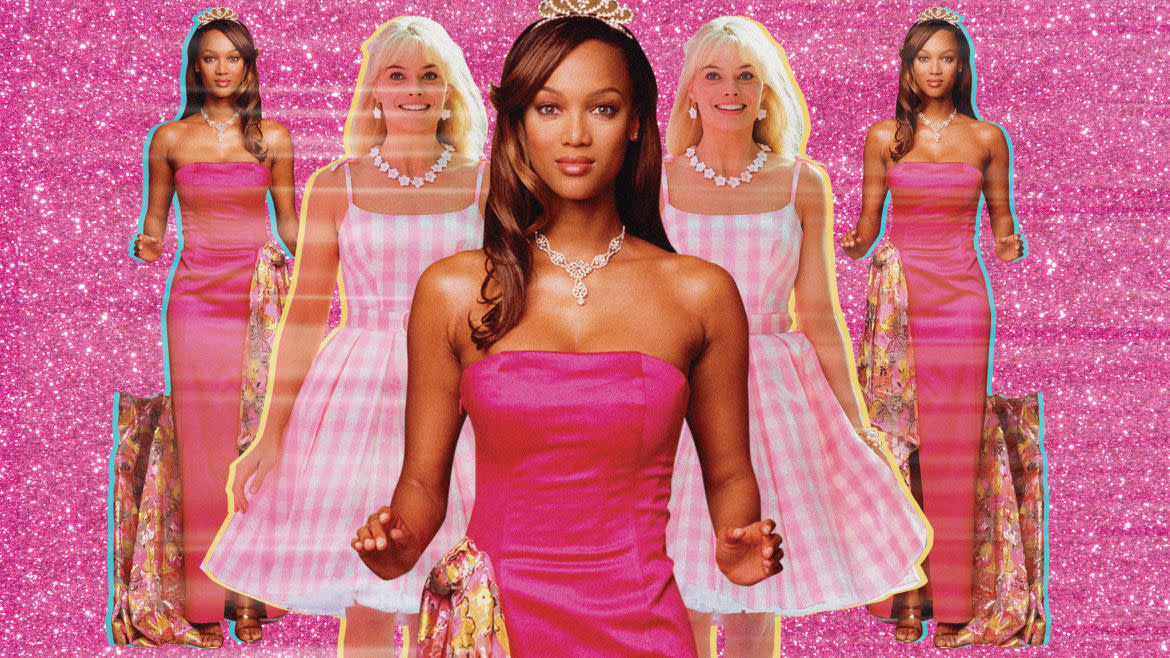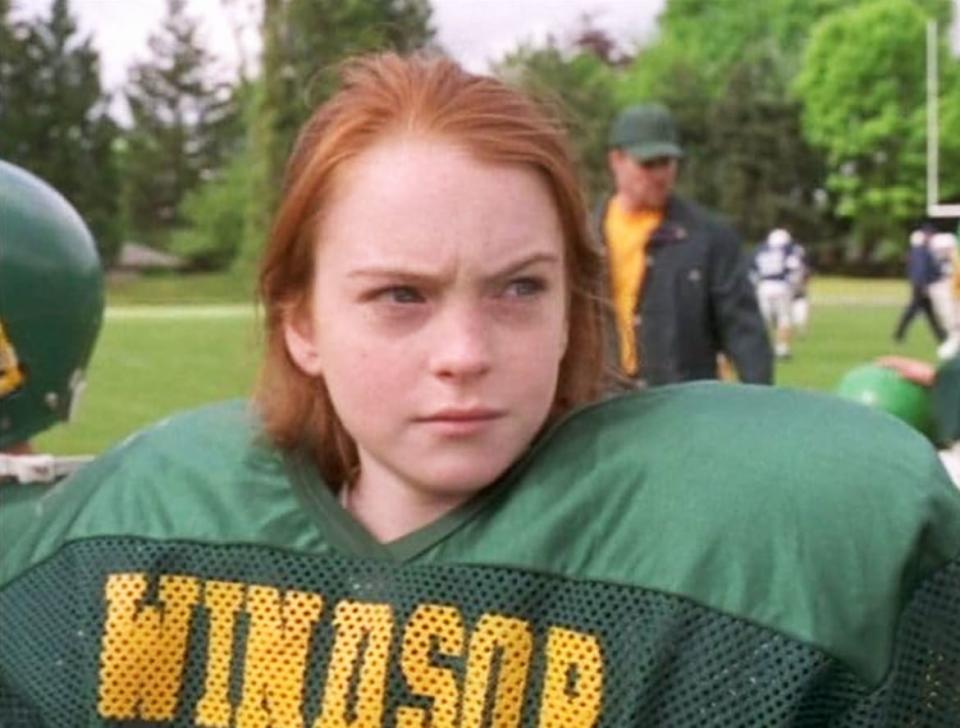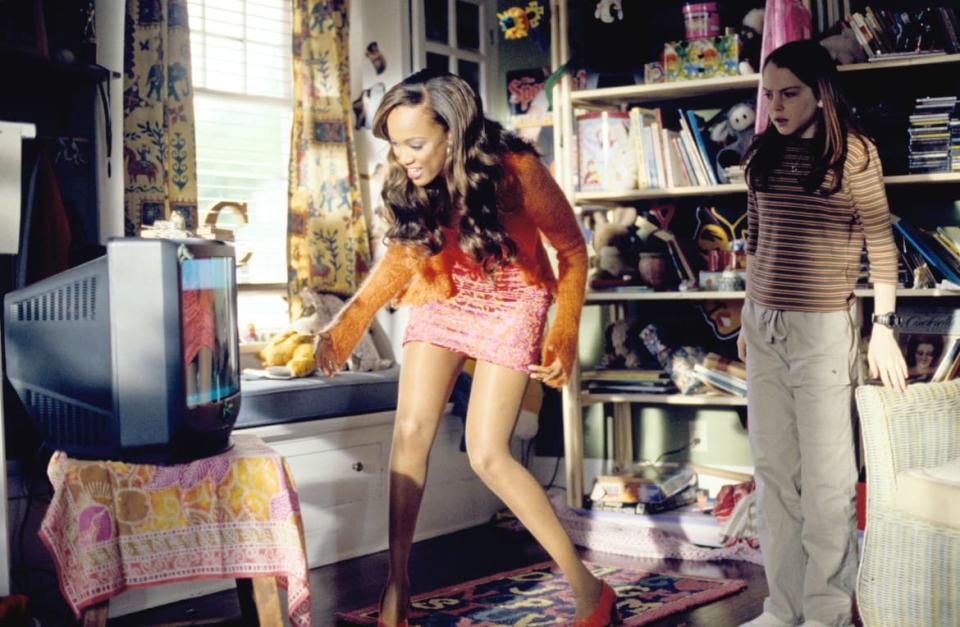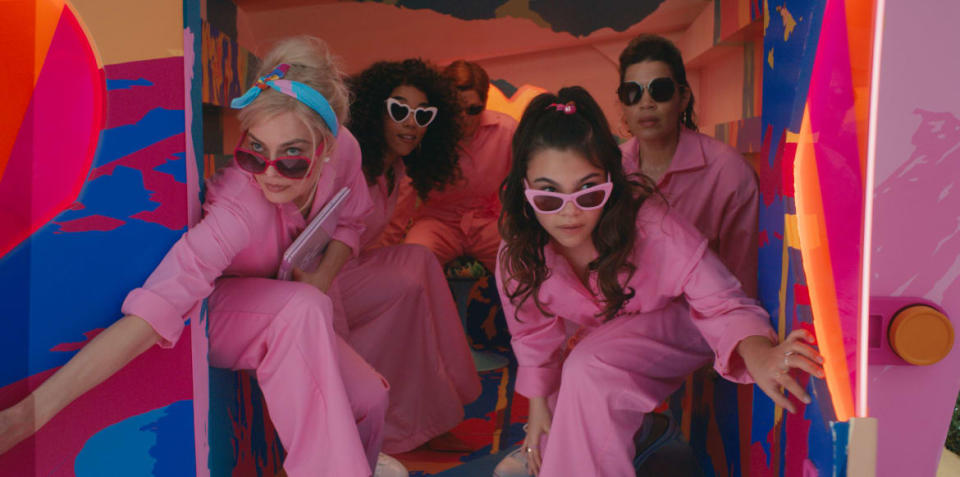‘Life-Size’: Remember When Tyra Banks and Lindsay Lohan Did the ‘Barbie’ Movie First?

- Oops!Something went wrong.Please try again later.
- Oops!Something went wrong.Please try again later.
- Oops!Something went wrong.Please try again later.
On March 5, 2000, The Wonderful World of Disney on ABC premiered Life-Size. The film stars Tyra Banks as Eve, a Barbie-esque doll that has come to life, and Lindsay Lohan as Casey, the little girl who owns Eve.
As a 7-year-old at the time, you can bet that I was seated and ready in front of the living room television that Sunday night. The film was a hit, and in the years following it would become a sleepover rewatch staple. As we all cool off from Barbie-mania, I felt that it was of the utmost importance to honor what came before. I love Barbie, and I love Life-Size—and they share more in common than having a doll as the lead. Both of these films center girlhood, role models, and humanity in a way that is truly moving, while simultaneously poking fun at capitalism and its excesses.
For those who were not the prime demographic for this film, Life-Size follows Casey, a seventh grade girl who has recently lost her mother and is coping by pushing away those around her. Casey’s father, Ben (Jere Burns), is a struggling recent widower and single father. His co-worker attempts to cheer Casey up by gifting her an Eve doll for her birthday. Eve is this film universe’s Barbie, with multiple high-achieving jobs (doctor, astronaut, etc.) to boot. Casey could not be less interested in the gift, but when Casey attempts to “resurrect” her deceased mother by casting a spell, Eve comes to life instead.
As a young child awash in crass early 2000s culture, I was fully sold on the gender binary. I never read the Harry Potter books nor saw the movies growing up, because I believed that they were “for boys.” (Yes, I recognize the remarkable irony of this given the harmful gender views the series creator would later reveal themselves to hold.) Life-Size’s protagonist, Casey, is a stereotypical tomboy. She plays on her school’s football team and hates dolls. She is repulsed by Eve’s celebration of femininity and “girliness”, seemingly viewing it as weakness or being superfluous.
Over time, Casey learns from Eve that she can both play football and enjoy feeling pretty, if she wants to. While Eve helps Casey deal with the loss of her mother, she also boosts Casey’s confidence, which allows her to embrace her true self and let down her guard around her old friends and loved ones. The evolution of their relationship is about much more than the “beauty” side of girlhood, and emphasizes that the natural emotional vulnerability in women is something to be proud of.
“I’ve hardly helped any girl. No one wants to buy me anymore. I don’t know what’s wrong with me,” Eve complains in a pivotal scene in Life-Size. Those feelings of imperfection, which slowly show through the cracks of “the perfect doll,” is similarly explored in Barbie, when Barbie (Margot Robbie) crumbles as she realizes that patriarchy rules the real world and Barbie dolls have not fixed everything, like she thought.

The dynamic between Eve and Casey is not so different from the initial conflict between Barbie and Sasha (Ariana Greenblatt), the central teen character in Barbie. Sasha hates what Barbie has represented throughout her life, in terms of feminism and perpetuating the male gaze, and Barbie must work to convince her that her purpose as a doll was the opposite of what Sasha was villainizing her for. Eve experiences a similar existential crisis, struggling to win over Casey and debunk her preconceptions about a doll that celebrates femininity. Eve opening up about her own insecurities and fears about how others perceive her helps Casey do the same, bringing their two journeys together for a tear-jerker ending.
It needs to be said that Tyra Banks gives a truly outstanding performance in Life-Size, and her undeniable physical comedy chops are arguably what made it so memorable as a child viewer. The accidental meta message of the film is not lost on me, either, which is that many viewers likely underestimate international supermodel Tyra Banks as a worthy actress due to her “superficial” role as a beauty icon. Banks instantly wins us over with her sharp timing and powerhouse emotional range, effortlessly carrying the entire film. Eve’s own journey runs parallel to these widespread misconceptions about womanhood.
We also must acknowledge some of the biggest laughs in the film. There’s the scene where Eve tries to be a secretary and just types gibberish to appear productive (me in my temp days, much?!) and my highest-ranking laugh-out-loud moment, when Eve eats entire chunks of butter at a restaurant without flinching. The fish-out-of-water elements of Life-Size truly delivers and make the film worth watching for even the most skeptical viewer.

One of the more moving scenes in Life-Size that still renders me weepy is when Eve cries for the first time. She doesn’t know what is happening to her, but her inherent empathy makes her so affected by the human world she’s now witnessing (Casey just lost a football game and is sobbing in her father’s arms) that she can’t help but cry.
She touches her graceful, single tear and examines it, trying to figure out why these mortals make her feel this way. Then, we see Eve taking in the ups and downs of humanity, such as a weeping child being hugged by his parents and a couple kissing. There is an extremely parallel sequence in Barbie—down to the stoic tear, the confusion that follows, and the digestion of how difficult and messy and wonderful humans can be—and I’m curious if Gerwig (who would have been 16 at the time of Life-Size’s premiere) drew any inspiration from it, or if this is just a logical trope that any writer might think to use to extol the complexity of humanity in “object-coming-to-life” media. Terminators can’t cry, after all.
I have to believe that Greta Gerwig was not totally unaware of Disney television films from the early 2000s since she gave us that “¡Si se puede!” America Ferrera Easter egg moment from 2002’s Gotta Kick It Up! in Barbie, which got a genuine gasp out of our theater audience of fellow women in their thirties.

While it’s too bad that Tyra Banks didn’t have a cameo in Barbie, she did cheekily acknowledge the synchronicity at play by dressing as Eve and posting it on her Instagram last week in anticipation of the film’s release. I hope that she knows how many of us wanted to see her on the big screen again! Yes, a Life-Size 2 Christmas film was released on Freeform a few years ago, but it’s impossible to find anywhere (as is the original Life-Size) and didn’t have the reception it hoped for. Get Tyra on a set again! She can deliver.
The true shining star of Life-Size, though, is Maya Mani, the film’s costume designer. Eve’s outfits are among my strongest memories of Life-Size. During our VHS marathons at sleepovers, my friends and I would rank the looks and argue about which ones we would wear in real life if we could. My personal favorite is the red-and-black lace/satin gown Eve wears on a night out with Casey’s father. If I find out that any of Eve’s outfits are available to buy anywhere (like that amazing “What Fran Wore” Instagram account devoted to outfits from The Nanny,) I will be skipping vacations for the next three years and purchasing all of them instead. I need that hat!

On a personal note, I must point out something jarring that happened to me when I saw Barbie last Friday night. My childhood best friend, who we’ll call Anna, happened to be at the same screening. Without getting into too much detail, we grew up with big dreams and moved to New York City together like we always talked about growing up. We got an apartment and lived together for years, and unfortunately had a falling-out when we were 25. It remains the most painful “breakup” of my life and something that I am still reckoning with six years later, grieving the future that I thought we had together.
Since the end of our decade-plus friendship, we sometimes bump into each other in the city, and we have an unspoken pact of ignoring each other. It genuinely breaks my heart every time. We watched Life-Size at those childhood sleepovers together, all those years ago. To view Barbie and take in all of its messages celebrating girlhood—knowing that Anna sat just a few rows behind me in the very same room—broke me. As I sobbed, I couldn’t help but wonder if she spent those hours in the darkened theater thinking about our Life-Size memories, too. It gave Barbie an extra weight for me that I will definitely be bringing up to my therapist this week. Should I bill Greta? Tyra? Or the patriarchy?
Keep obsessing! Sign up for the Daily Beast’s Obsessed newsletter and follow us on Facebook, Twitter, Instagram and TikTok.
Read more of our Barbie coverage HERE.
Michael Cera’s Entire Career Has Been Leading Up to ‘Barbie’
Why Does Everyone Cry at the ‘Barbie’ Movie?
The 9 Best Moments From the ‘Barbie’ Movie
Get the Daily Beast's biggest scoops and scandals delivered right to your inbox. Sign up now.
Stay informed and gain unlimited access to the Daily Beast's unmatched reporting. Subscribe now.

